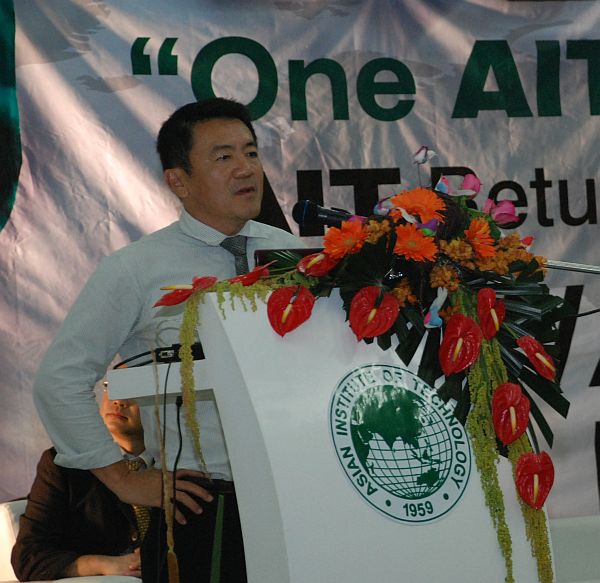Dr Seree stated that there is a “do nothing option” as well, though
ideally Thailand has to decide between creating a retention area,
either along with or without the flood channels.
Speaking at AIT at an event organized to mark the return of AIT to its
campus after being inundated on 21 October 2011, Dr. Seree stated that
during the past decades, weather patterns in Thailand have fluctuated
from severe droughts and floods. He quoted a World Bank study which
stated that a year of flood can be followed by a drought and a heat
wave in successive years.
Dr. Seree remarked that the cumulative rainfall since January 2011 led
to a huge accumulated flood water volume in Nakhon Sawan province of
Thailand, which culminated in the Great Thailand Flood of 2011. The
Chao Phraya River has a basin area of about 162,800 square kilometres,
and Nakhon Sawan is the area of confluence of four rivers, namely the
Ping, Wang, Yom and Nan rivers.
Responding to queries on whether Thailand will be flooded in 2012, Dr.
Seree stated that there is an uncertainty related to climate forecasts,
and the acceptable range of good forecasts is less than 10 days. He
suggested better forecasting of inflow of water to dams; stress on risk
communication; an adequate decision support system; better land-use
planning and flood risk assessment as the lessons learnt from the 2011
flood.
The entire presentation delivered by Dr. Seree at AIT can be viewed at
this link.


